Harvest Your Parsnips Later – The Taste Will Be Better Once They’re Exposed To Frost

VEGETABLES > PARSNIPS > HARVESTING

Elizabeth is a Permaculture Garden Designer, Sustainability Consultant and Professional Writer, working as an advocate for positive change. She graduated from the University of St. Andrews with an MA in English and Philosophy and obtained a Diploma in Applied Permaculture Design from the Permaculture Association.
Reviewed By COLIN SKELLY

Colin is a Horticulturist and Horticultural Consultant with experience in a range of practical and managerial roles across heritage, commercial and public horticulture. He holds the Royal Horticultural Society’s Master of Horticulture award and has a particular interest in horticultural ecology and naturalistic planting for habitat and climate resilience.
PARSNIPS GUIDES
Harvesting
Sowing
Parsnips are a wonderful crop to grow in your garden.
Though they will take up space in a garden for a relatively long period, there is nothing quite like being able to pull your own parsnips from the ground through autumn and early winter.
The parsnip harvest is the reward for your efforts over the growing season, from sowing the seeds in spring to thinning your crop to keeping everything well mulched and weeded during the summer months.
If you are growing parsnips for the first time, you may have some questions about the harvesting process.
So, let’s take a look at the process involved and explain when and how to harvest this relatively easy and low-maintenance crop.
| Difficulty | Easy |
| Equipment Required | Garden fork |
| When To Harvest | September to December |
When To Harvest Parsnips
Parsnips can be ready to harvest from around September onwards.
The roots can be lifted as soon as the foliage begins to die back towards the end of the season.
However, parsnips are generally better harvested later, since their taste will improve after they are exposed to frost.
Parsnips will typically be mature around 100-120 days after sowing, but remember that this is just a rough guideline and the time to harvest will vary depending on which variety you choose to grow.
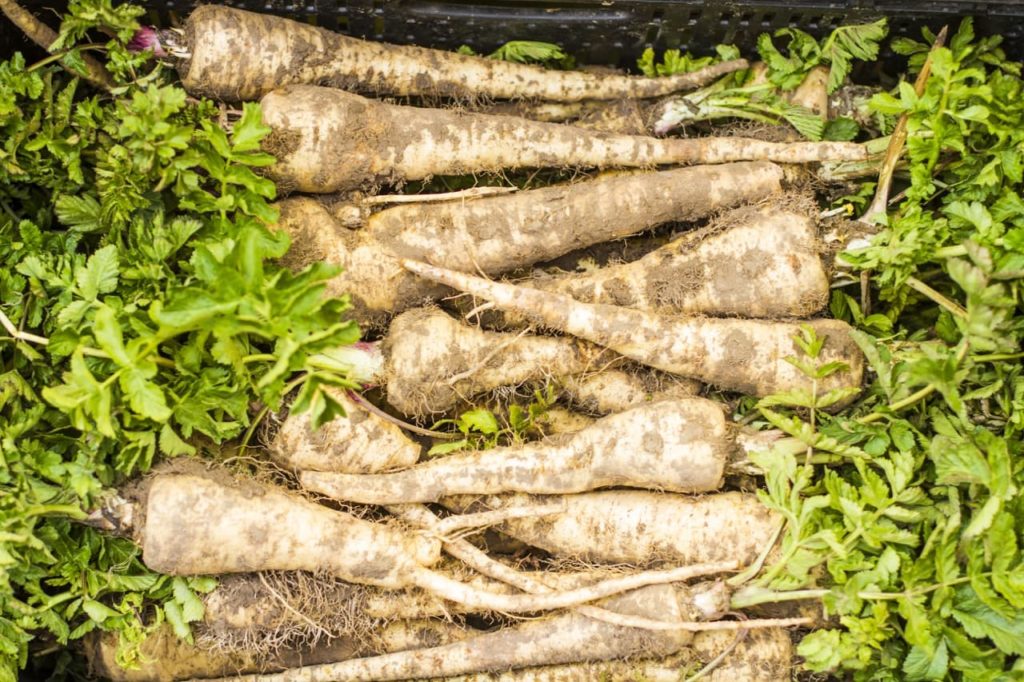
The time to harvest will also depend on where you live and the weather conditions.
Though there are, of course, no rules about not harvesting while the parsnips are smaller and not fully grown, waiting until the foliage dies back means that you are getting as much edible root as possible.
Waiting until later to harvest your parsnip crop also makes more sense because you will find that the parsnips taste so much better after they have been exposed to the first few touches of frost.
The frost turns the starches in the root into sugars and makes the parsnips a little sweeter.
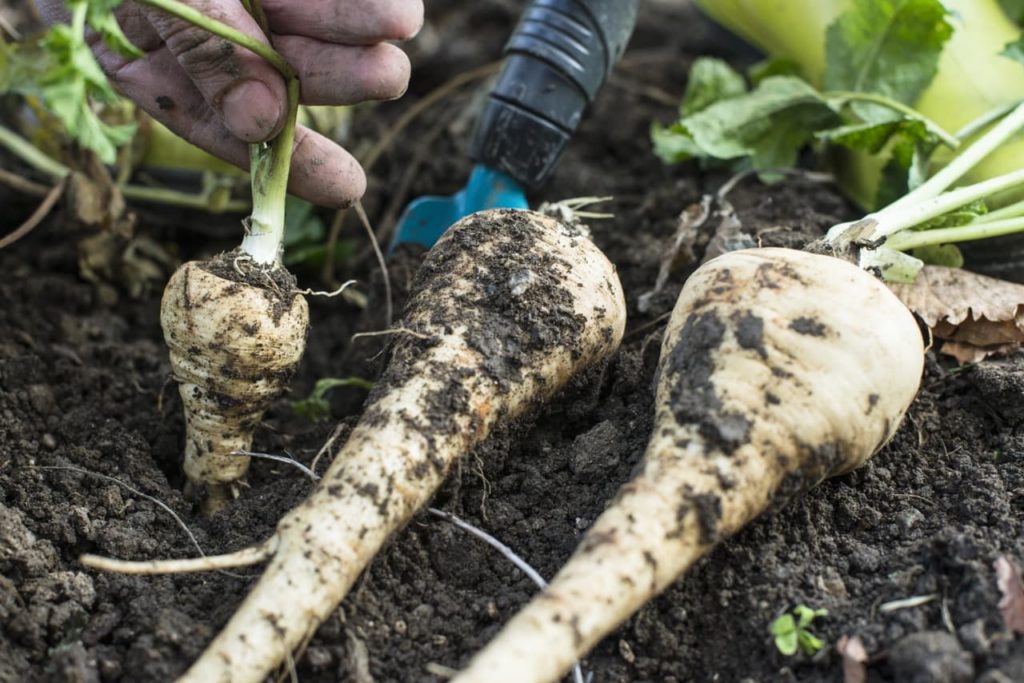
The parsnips harvested just in time for Christmas dinner can be the sweetest and best-tasting imaginable – a very fine addition to your festive table.
I tend to harvest a few parsnips for birthday meals in early October, then use more for bonfire night, before saving the rest of my crop for the yuletide season.
I find that parsnips are something to look forward to as the weather grows colder and the nights draw in.
The Harvesting Process
When you are harvesting your parsnips, do not tug on your parsnips from above.
To make sure you get them out intact and do not damage them, use a garden fork to pry them up from the soil.
The roots can easily break if you tug them or are careless as you try to remove them from the soil.
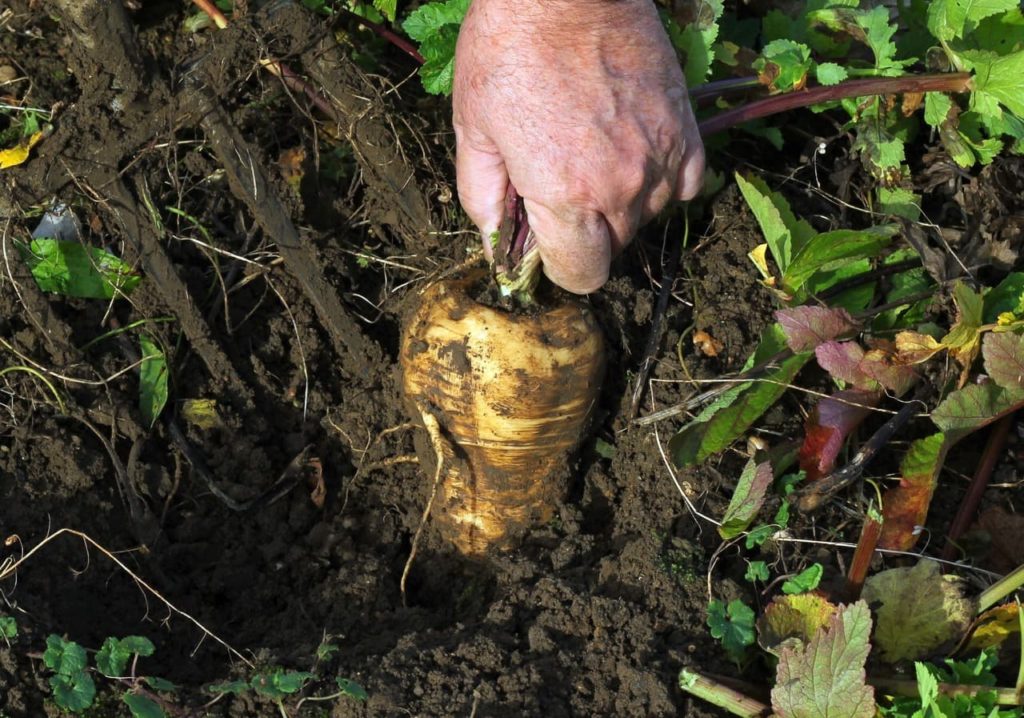
If you break your parsnips you can still eat them, but they won’t store well and will have to be cooked immediately or frozen and preserved for later use.
Gently ease a large garden fork into the soil, remembering that parsnip roots can go pretty deep, and lever upwards to bring the parsnips up from the soil.
“I try to harvest parsnips when the soil is moist but not wet,” Colin Skelly, a Horticultural Consultant, explains.
“I find that they are easier to remove, hold less soil, require less cleaning, and cause less compaction on the surrounding soil.”
Try to lever up a whole area of soil rather than the parsnip itself so that you do not damage the parsnip root in the process.
Storing & Preserving Parsnips
As mentioned above, the parsnips can be left in the ground and harvested as and when you want them through the winter months.
However, in areas where the ground freezes solid, you may like to lift and store your roots before Christmas.
Of course, you might use up the parsnips that you harvest right away.
In my home, we love honey-roasted parsnips and also use parsnips in hearty soups over the winter.
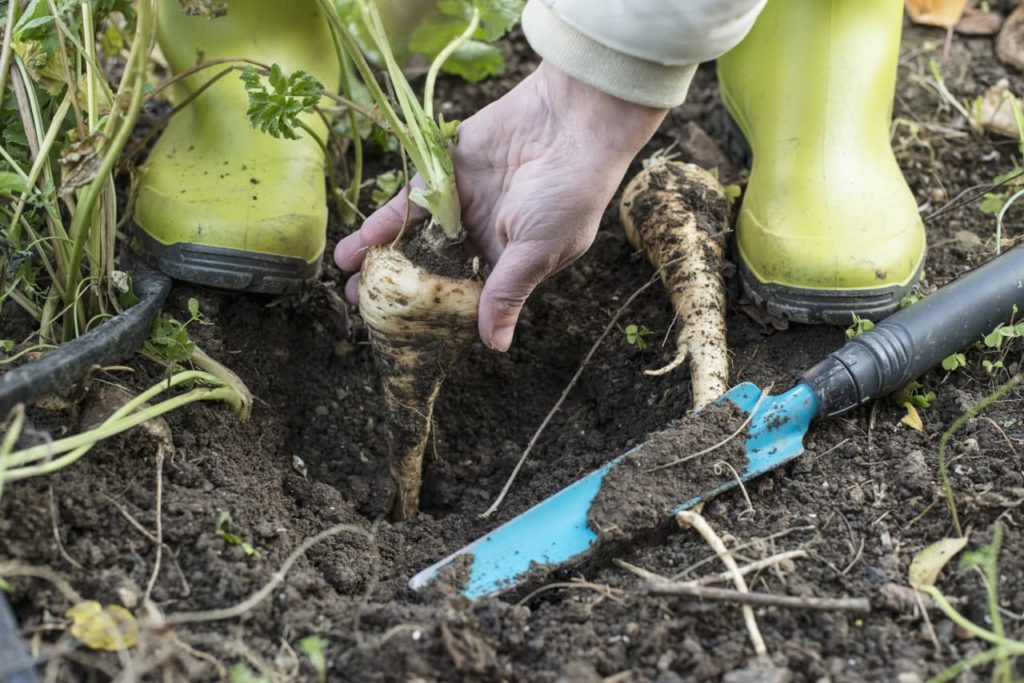
In fact, there are many different recipes that you might try.1Hardwick, N. (2023, March 10). 20 ways with parsnips. BBC Good Food. Retrieved March 27, 2023, from https://www.bbcgoodfood.com/howto/guide/top-10-ways-parsnips
However, there may be times when you want to store parsnips out of the ground for longer.
Undamaged parsnip roots that are in good condition can be stored in a root cellar or other suitable spot to use up over the winter months.
Like carrots and other root vegetables, you can store them in a box of sawdust or damp sand to prolong their life in storage.
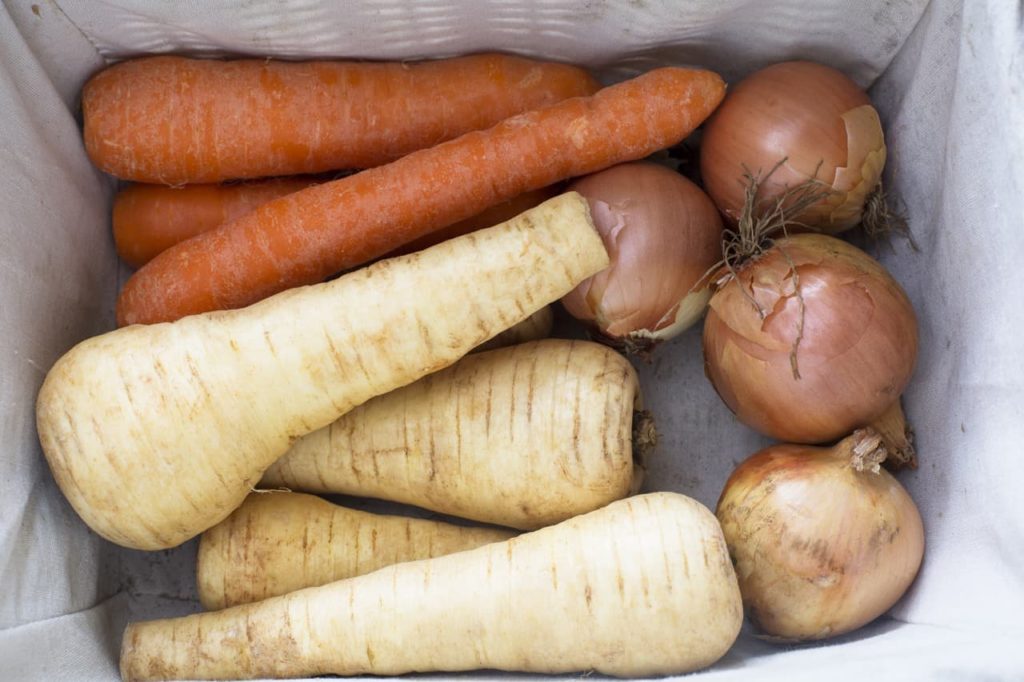
However, in most cases, parsnips will store best when kept in the ground until used.
You can simply leave them in situ and ease each one from the ground as and when it is required.
If you do not have anywhere suitable to store parsnips traditionally and cannot keep them in the ground, you can slice, par-boil and freeze them for later use.
You can also use a pressure canner and can parsnips using a trusted recipe if you have a suitable canner at home.
References
- 1Hardwick, N. (2023, March 10). 20 ways with parsnips. BBC Good Food. Retrieved March 27, 2023, from https://www.bbcgoodfood.com/howto/guide/top-10-ways-parsnips
